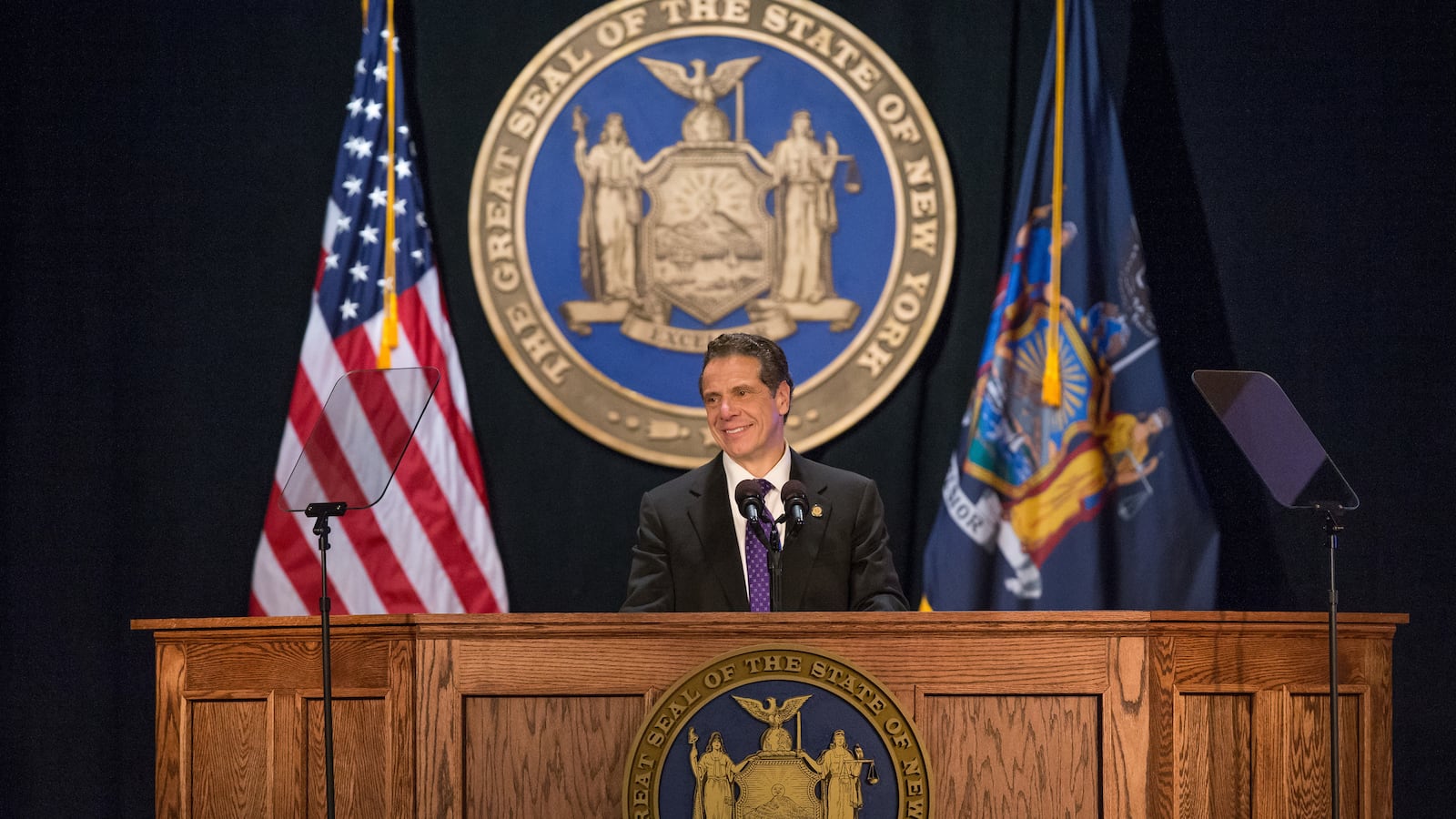Gov. Andrew Cuomo once again laid the responsibility of equitable school funding on local districts Monday, earning the nickname “Ebenezer Scrooge” from an advocacy group and kicking off what could be a contentious fight over education spending.
In a speech to the New York City Bar Association, Cuomo released his legislative priorities for the first 100 days of his new term as governor. He devoted a small portion of his comments to education, immediately sparking anger from his critics.
Cuomo directly placed responsibility for funding schools on local districts, saying the money is “not fairly distributed by them.” He pointed to a law he pushed to pass last year that required school districts to compile a report on how state funding is distributed among schools.
“The truth is the poorest schools do not receive any more funding than the richer schools from their local districts,” Cuomo said. “And that, my friend, is a critical injustice because the poorer schools have a great need that needs to be funded.
Then, Cuomo called the foundation aid program — designed to send extra dollars to high-needs school districts — and the 1993 lawsuit filed by New York City parents that laid the groundwork for foundation aid as “ghosts of the past” and part of “a political game.”
“The question is the local distribution of aid,” Cuomo said. “That’s what we have to focus on if we’re actually going to move from political pandering to progressive policy. It’s a question of math and theory, not philosophy and political posturing.”
Advocates say the state still owes the education department about $4 billion in foundation aid funding. The state halted funding under the formula during the recession. In 2017, Cuomo proposed changing it to a level that advocates described as a “repeal.” But Cuomo’s proposal could not overcome these advocates’ opposition and failed to pass.
“Cuomo is the Ebenezer Scrooge of public schools, starving children of much needed resources and state funding,” said Jasmine Gripper, legislative director for the union-backed advocacy group Alliance for Quality Education, in a statement after Cuomo’s speech.
The problem, Gripper said, is that under Cuomo, the “state doesn’t provide enough funding to meet the growing needs that result from growing poverty and increased numbers of English language learners.”
A Chalkbeat analysis of New York City’s school funding data found there are funding disparities, which can amount to thousands of dollars per pupil, between schools, largely because of the Fair Student Funding Formula that sends more dollars to schools with hard-to-serve students, like those with disabilities or those from low-income families.
Some educators, including school principals, argue this formula does not go far enough to address school inequities — holes often filled by rich PTAs.
In the past, some scholars have questioned whether spending more money on schools necessarily results in sufficiently better outcomes for students. But a new review of the research suggests that additional money can play a role in student academic performance. But how that money is spent also likely matters.
The state Department of Education recently proposed a $2.1 billion increase in school funding, most of it tied to boosting foundation aid dollars. The state teachers union and Alliance for Quality Education lauded the Board of Regents’ proposal.
Michael Mulgrew, president of the United Teachers Federation, said it’s “time to take the politics out of state resources for education,” adding that low-income students have been “shortchanged for years” by the state formula.
As they have in the past, state education policymakers also endorsed a $4.9 billion, three-year phase-in of the money many argue is still owed under foundation aid.
“As we said when we released our proposal last week, all children should have access to a high-quality education regardless of their race, where they live or where they go to school,” said Emily DeSantis, a spokeswoman for the state Department of Education. “We look forward to working with the legislature and the executive to achieve this for all New York’s children.”
With more progressive Democrats in the Senate who campaigned on boosting education spending, Cuomo’s comments could signal a contentious budget fight ahead. Lawmakers must hash out a budget pan by April 1, and Cuomo’s budget proposal is expected in January.
Lawmakers don’t typically grant the full funding request from state policymakers. Last year, for example, legislators approved $1 billion in more funding for education, which was still more than half a billion dollars less than what the Board of Regents asked for.

